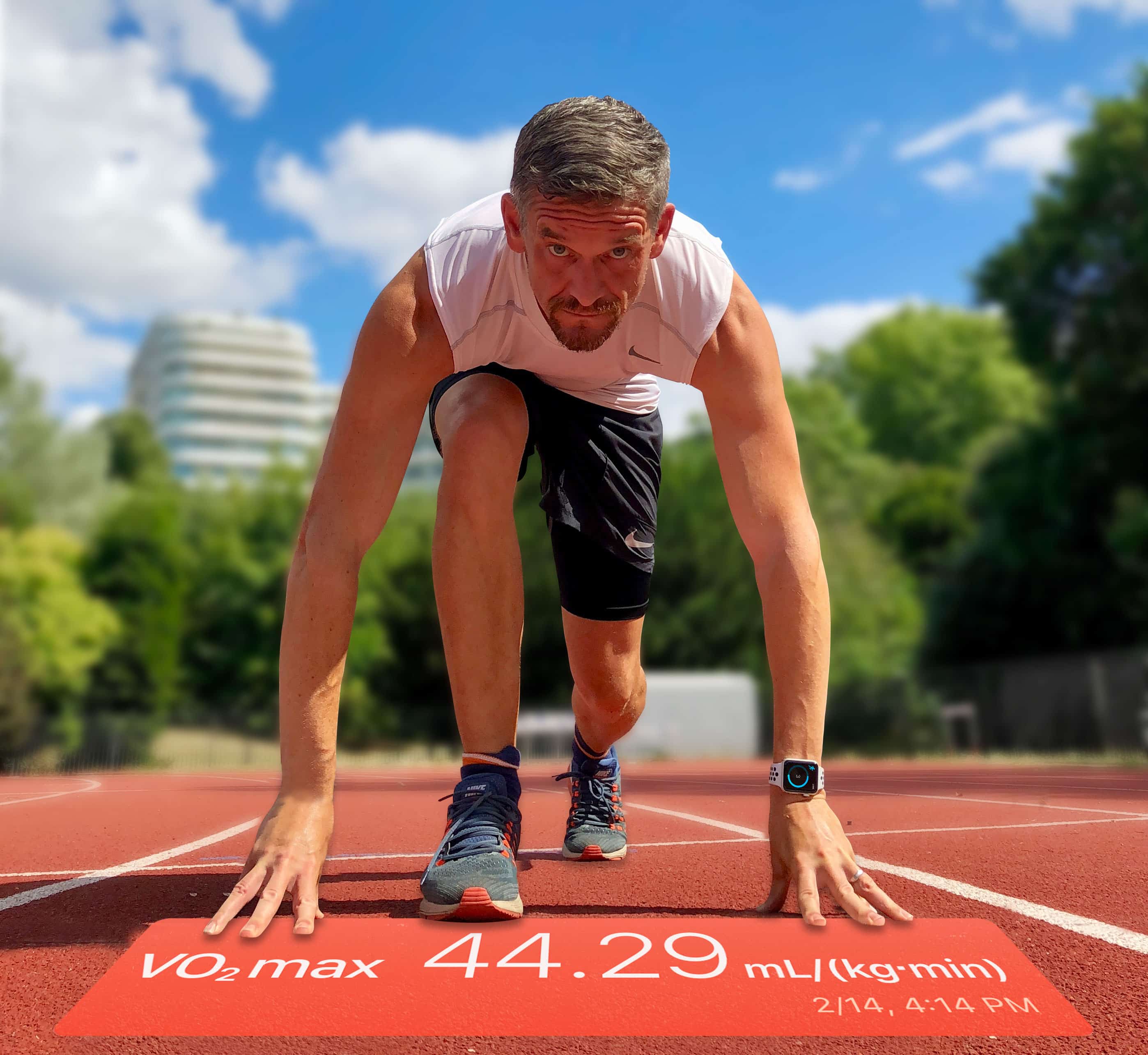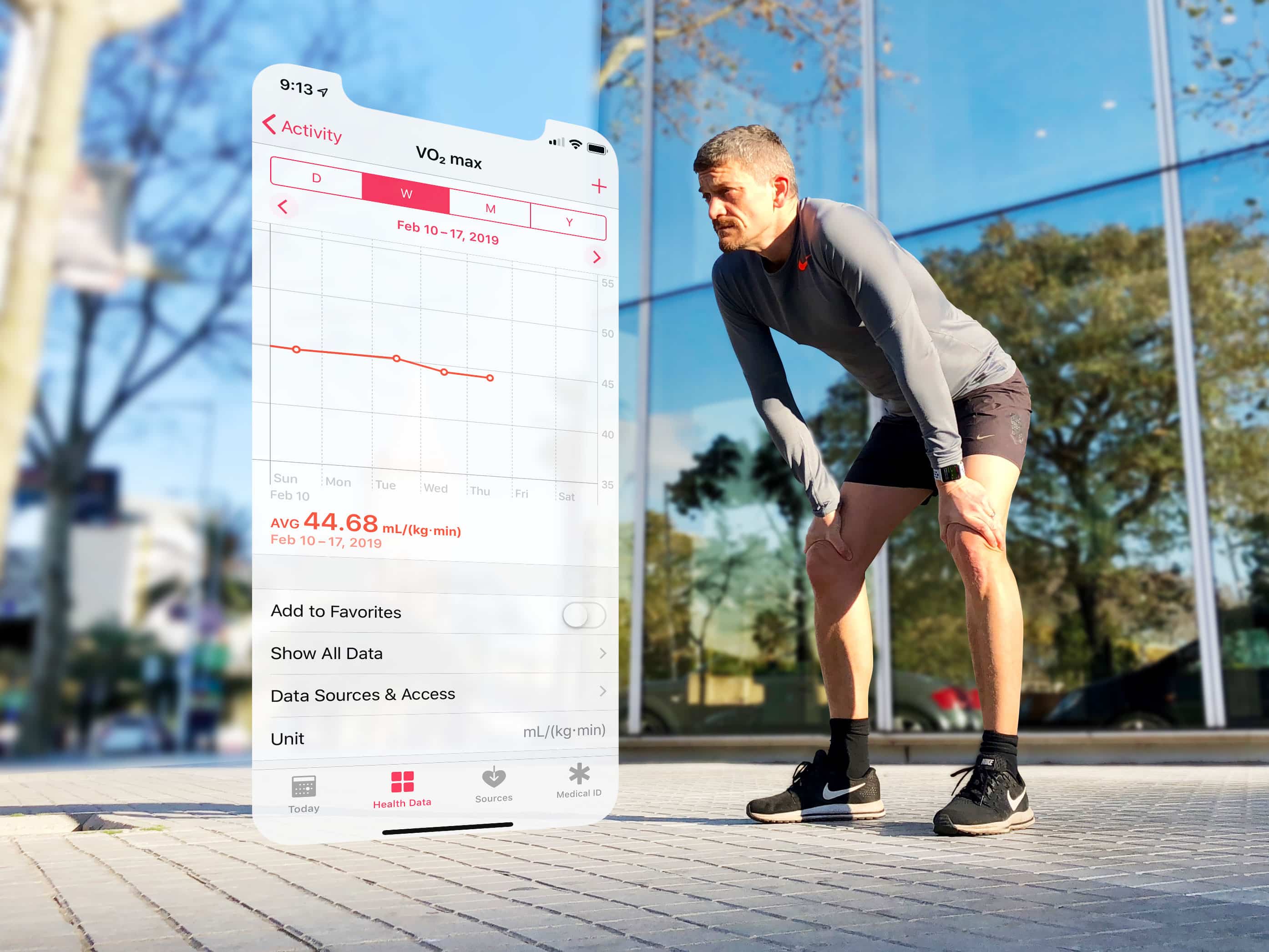VO2 max: The Apple Watch metric that reveals your aerobic fitness

Want to know how fit you really are? Apple Watch provides loads of insightful metrics you could check. So many, in fact, that there is not enough space for them all in the Workout app. Instead, you’ll find much of this crucial data buried away in the Health app on your iPhone.
One of the most interesting is VO2 max, which is basically the ultimate test of your aerobic fitness. If you’re into endurance sports, VO2 max is a metric you’ll want to check out.
Here’s a quick guide to everything you need to know about VO2 max on Apple Watch: What it is, how to use it, and how to improve yours.
What is VO2 max?
VO2 max is a measurement of the amount of oxygen from the air you breath into your lungs that is then transported by your bloodstream to your muscles, where it is converted into energy during a workout.
The “V” in VO2 max stands for volume. It is measured in liters per minute (L/min): the volume of oxygen you breath in a minute. But Apple uses a slightly more complicated metric: mL/(kg·min). That means milliliters of oxygen per kilogram of body mass per minute. By taking your body weight into account in this way, it makes the stat more comparable between different people, since a larger person is likely to consume more oxygen than a smaller person.
The “max” in VO2 max means the measurement has to be taken when you are working out at your maximum level of exertion — literally when you are giving it everything you’ve got.
Why is VO2 max interesting?
The key to being good at endurance sports is the ability to maintain a high intensity of effort for a long period of time. Running fast for a few yards is all very well, but that is not going to be much use if you are training for a marathon.
The reason you can’t maintain your fastest pace for very long is because your body uses different energy systems to fuel different levels of workout intensity. Low-intensity workouts, like walking or slow jogging, are easy to sustain for a long time because they rely on your aerobic energy system. This means they are fueled mostly by the oxygen you breath as you are doing the exercise.
But as you increase the intensity of your workout (for example, by running faster), you can’t breath in sufficient oxygen fast enough to fuel your muscles. This is when your anaerobic energy systems kick in. These are like backup systems that use fuel stored within your muscles to supplement the energy you get from your aerobic energy system, enabling you to keep going.
The trouble is that your anaerobic energy systems are only good for short bursts before they become depleted. Then, your system gets overloaded with waste products that make your muscles feel like they are burning. At this point, you are forced to slow down or stop your workout.
With training, you can improve your aerobic energy system to become more efficient. This improvement is what VO2 max measures. An increase in VO2 max indicates an improvement in your aerobic fitness. Meaning you can train harder for longer, without falling back on your anaerobic energy systems.
Why does Apple Watch use ‘predicted VO2 max’?
To accurately measure your VO2 max, you must wear a face mask. This is the only way to know for sure how much oxygen is going in and out of your lungs.
Since Apple Watch is worn on your wrist, not your face, this is out of the question. So instead, Apple Watch provides a “predicted VO2 max” metric. This is an estimate based on changes in your heart rate during exercise.
Are VO2 max predictions accurate?
The relationship between heart rate and VO2 max is not precise, and it varies from one individual to another. So Apple’s predicted VO2 max may not be very accurate. The estimate is also dependent upon your Apple Watch’s heart rate sensor. And while that’s pretty good, it is not infallible.
Once way to improve its accuracy is to connect your watch to a Bluetooth chest heart rate sensor, like the Polar H10.
Checking your VO2 max in the Health app

Photo: Graham Bower/Cult of Mac
Apple Watch may log your VO2 max, but you can’t currently check it on the watch itself. To see your stats, you must use the Health app on your iPhone. Go to Health Data > Activity and scroll down to find it. If you have readings for the current month, they will be highlighted in a big orange box. If you have no VO2 max data, it will be languishing at the bottom of the list, under No Recorded Data.
Why is there no VO2 max data in the Health app?
If you can’t find any VO2 max readings in the Health app, that is probably because you have not yet logged the right kind of workouts with your watch. Only two workout types can produce an estimated VO2 max on Apple Watch: Outdoor Walk and Outdoor Run.
VO2 max relates to maximal exertion. So you’ll need to log a pretty intensive workout to generate a reading. And you’ll need to sustain it for at least 20 minutes.
How to improve your VO2 max
VO2 max is determined by a combination of genetics and fitness level. Elite endurance athletes are blessed with good genetics that the rest of us can probably never compete with. But with training, it is possible to increase your VO2 max.
If you want to know how you compare to typical VO2 max levels, check out this chart. But what is normal varies from one person to another, so it’s better to focus on your own stats to see your progress, rather than comparing with other people.
To train your VO2 max, you need to do a workout at sufficient intensity to reach your anaerobic threshold. This is the point at which you can no longer sustain your workout with just your aerobic energy system. You will know when you approach the threshold. You start to feel out of breath and you get a burning sensation in your muscles.
Logging a 20-minute, high-intensity outdoor run workout once a week will help to increase your VO2 max. It will also ensure you regularly log your predicted VO2 max.
Alternatively, you could try a HIIT workout. High Intensity Interval Training combines short busts of intense exercise with rest intervals in between, like my hill repeat workout.
Are you sure you want to take your fitness to the max?
Take care when doing workouts at high intensity like this. Especially if you are not used to it. Making sudden changes to the level of exertion you subject your body to can cause an injury. If in doubt, check with your doctor first.
Predicted VO2 max is a very interesting and welcome addition to Apple Watch’s growing arsenal of fitness metrics. If you’re training for a marathon or triathlon, you should definitely check it out.



Leave a comment